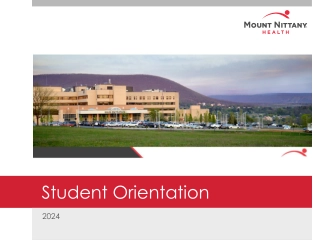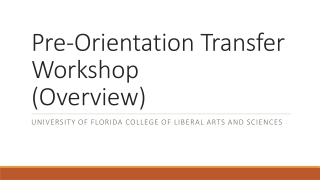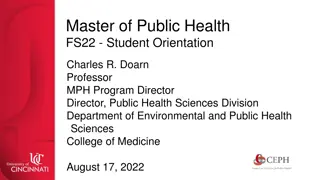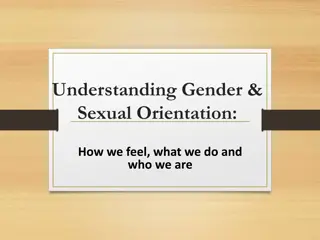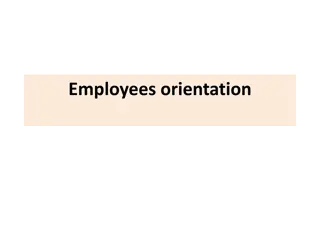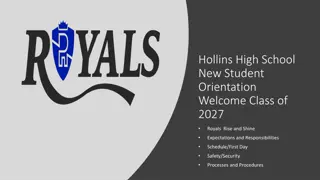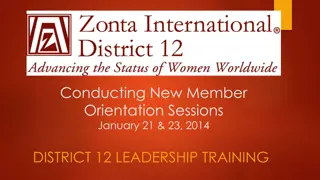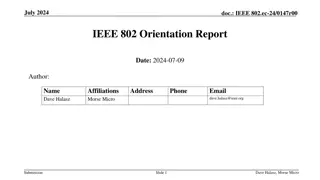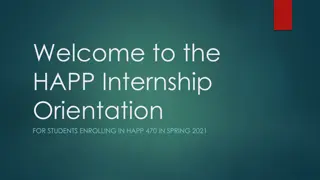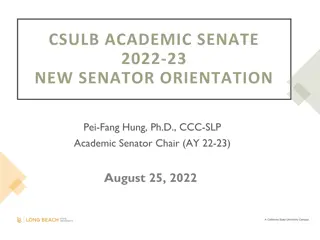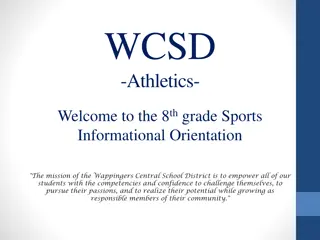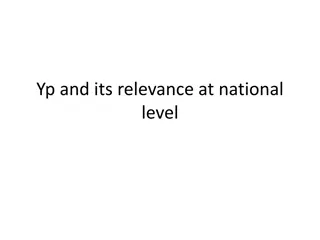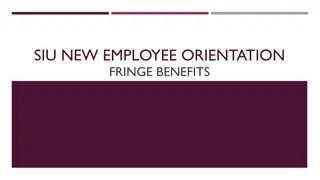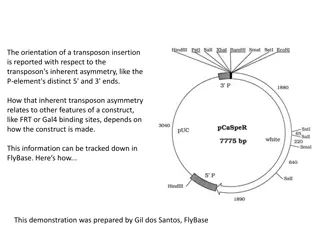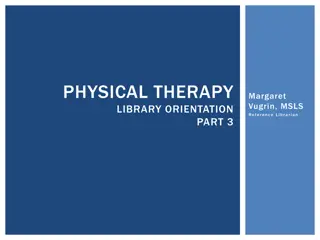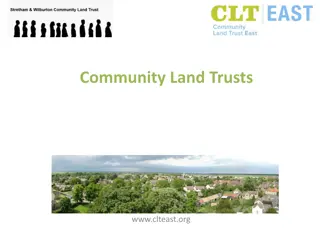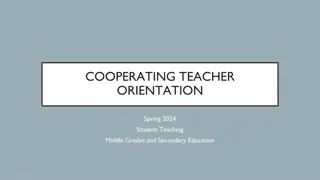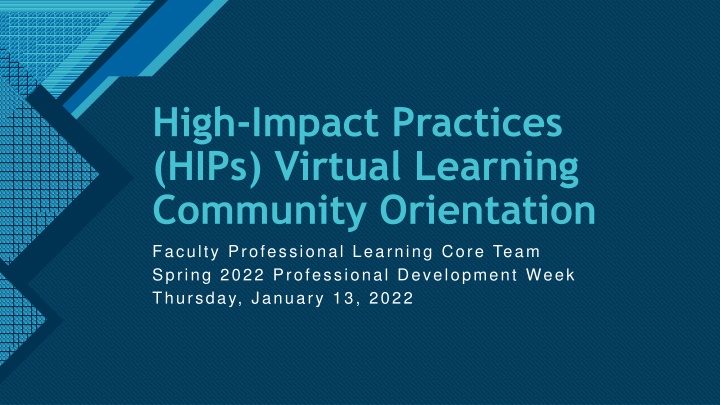
Implementing High-Impact Learning Practices for Faculty Development
Explore the integration of Active Learning, Open Educational Resources (OER), Collaborative Learning, and Problem-Based Learning in faculty professional development. Enhance teaching strategies for an engaging virtual learning community.
Download Presentation

Please find below an Image/Link to download the presentation.
The content on the website is provided AS IS for your information and personal use only. It may not be sold, licensed, or shared on other websites without obtaining consent from the author. If you encounter any issues during the download, it is possible that the publisher has removed the file from their server.
You are allowed to download the files provided on this website for personal or commercial use, subject to the condition that they are used lawfully. All files are the property of their respective owners.
The content on the website is provided AS IS for your information and personal use only. It may not be sold, licensed, or shared on other websites without obtaining consent from the author.
E N D
Presentation Transcript
Click to edit Master title style High-Impact Practices (HIPs) Virtual Learning Community Orientation Faculty Professional Learning Core Team Spring 2022 Professional Development Week Thursday, January 13, 2022 1
Click to edit Master title style Orientation Agenda Professional Learning Core Team & Learning Community Moderators Why HIPs? Fall 2021 Update What's in Store this Semester Deliverables & Deadlines 2 2
Click to edit Master title style Title III Faculty PL Core Team Leadership Sharmon Bryant, Associate Director, Title III grant Girija Nagaswami, Professor of English and Faculty Center for Teaching & Learning (FCTL) Facilitator Stephanie Scordia, Associate Professor of English and Professional Learning Coordinator, Title III grant 3 3
Click to edit Master title style Title III Faculty Professional Learning Core Team Catherine Malele Chemistry Edite Birnbaum Foundational Math Jennifer Schneider Paralegal Studies Khalica Collins Advising Jocelyn Sirkis Business Leadership, Fashion, & Hospitality Judy Cruz-Ransom Criminal Justice Christine Veal Nursing Taoufik Ennoure Computer Technologies 4 4
Click to edit Master title style Virtual Learning Community (Canvas) Moderators Jennifer Schneider, Active Learning Taoufik Ennoure, Collaborative Learning Jalyn Warren, Open Educational Resources Nicole Vadino, Problem-Based Learning 5 5
Click to edit Master title style Implementing High-Impact Practices at CCP Active Learning is an approach to instruction that involves actively engaging students with course material through discussions, problem solving, case studies, role plays and other methods. Open Educational Resources (OER) are teaching materials that exist in the public domain or have been released under an open license that permits no- cost access, use, and redistribution with no or limited restrictions. Collaborative Learning promotes interaction among students to optimize the learning experience. As a teaching method, it is based on students cooperation and sense of being a community of learners. Problem-Based Learning (PBL) is a teaching method in which complex real- world problems are used as the vehicle to promote student learning of concepts and principles as opposed to direct presentation of facts and concepts. 6 6
Click to edit Master title style Benefits of High-Impact Practices High-impact practices (HIPs) have been proven to be effective in helping first-year students successfully transition into college (Demetriou, Meece, Eaker-Rich, & Powell, 2017). Research has shown persuasively that HIPs improve the quality of students' experience, learning, retention, and success (Watson, Kuh, Rhodes, Penny Light, & Chen, 2016). Kuh (2008) describes strong positive effects of student participation in high-impact activities as measured by items from the National Survey of Student Engagement. A comprehensive study involving 29 colleges and universities highlights the effectiveness of High- Impact practices in improving equity and closing achievement gaps (NSSE, 2015). The associated benefits of High-Impact Practices rely heavily on effective implementation (Hobbs & Kropp, 2018) Finley and McNair (2013) point to the need for pre- and posttest measures to increase the validity of the reported findings on benefits of HIPs for students. 7 7
Click to edit Master title style Update from Fall 2021 Last semester, approximately 40 faculty participated in virtual learning communities in Active Learning, Collaborative Learning, Open Educational Resources (OER), and Problem-Based Learning. Supported by the Faculty Professional Learning Core Team, faculty from across the College engaged in meaningful conversations with each other and reflected upon the impact of their chosen HIP on student outcomes in their classes. Participants worked together to ensure the learning community was a productive, engaging experience as they met virtually and interacted with each other and the resources in the Canvas community. 8 8
Click to edit Master title style those who took part in the OER [community] benefitted from the time, thought, and energy that the planners put into designing the modules and the deliverables." "[HIP] was helpful because it is easier to learn when speaking with other students." -Fall 2021 student "I like working in groups because it helps me better understand the assignments assigned to me." -Fall 2021 student "Active Learning [is] a key component to teaching our students to be good team members both in school and at work. Although not all active learning involves groups and clear member roles, the reality is that in the work place our students need to be active members of teams at work who can solve routine and non-routine problems in all fields." -Learning Community participant "This was a great experience. All of -Learning Community participant 9 9
Click to edit Master title style Spring 2022 Experience As part of a virtual learning community this semester, you will be asked to Attend virtual orientation on Thursday, Jan. 13, 2022 (or view recording) Accept the Canvas community invitation and familiarize yourself with the resources there Engage in conversations with colleagues about the HIP and your experience implementing it in your class/es this semester 10 10
Click to edit Master title style Spring 2022 Experience Complete two surveys (pre- and post-implementation) Administer an anonymous student survey Share assessment data with the Core Team (This involves linking an assignment to the most appropriate CLO/s in AEFIS. Training will be provided.) 1111
Click to edit Master title style Deliverables What we need from you and why 1212
Click to edit Master title style Deliverable #1: Pre-HIP ImplementationQuestionnaire Outlook form to be completed at the beginning of term (end of the second week of classes) Link to questionnaire in Canvas Questions include: How does [the HIP] relate to your course learning outcomes? Given your prior experience teaching this course or a course with similar content, what would a meaningful, realistic positive outcome of [HIP] implementation look like for you/your students this semester? How do you plan to assess or measure the impact of the practice on your students? 13 13
Click to edit Master title style Deliverable #2: Post-HIP ImplementationFeedback Outlook form for you to complete at the end of term (complete by end of finals week) Link to form in Canvas Prompts include: Assessment of student outcomes using qualitative and/or quantitative measures (measures could include pass rates, participation, attendance, % of completed assignments, etc ) Brief reflection on this PL experience (what worked well/what didn t, benefits, obstacles, etc ) 14 14
Click to edit Master title style Deliverable #3: HIP Assessment Data from AEFIS Link an assignment to the most appropriate CLO/s in AEFIS Send the Core Team a screenshot of the assessment data which shows how many students met the outcome/s, exceeded expectations, and didn't meet the outcome/s Training will be provided 15 15
Click to edit Master title style Deliverable #4: Anonymous Student Feedback We will provide a brief survey to administer to your students at the end of the semester Students are not required to complete the survey All responses are anonymous (students indicate which HIP their professor implemented) 16 16
Click to edit Master title style References Demetriou, C., Meece, J., Eaker-Rich, D., Powell, C. (2017). The activities, roles, and relationships of successful first-generation college students. Journal of College Student Development, 58, 19-36. Hobbs, P. and Kropp, E. Faculty Focus, (2018). Leveraging High-Impact Practices at the Course Level Finley, A., McNair, T. B. (2013). Assessing underserved students engagement in high impact practices. Washington, DC: Association of American Colleges and Universities. Kuh, G. D. (2008). High-impact educational practices. Washington, DC: Association of American Colleges and Universities. National Survey of Student Engagement. (2015). NSSE high-impact practices summary percentages. Bloomington, IN: Author. Retrieved from http://nsse.indiana.edu/2015_institutional_report/pdf/HIPTables/HIP.pdf Watson, C. E., Kuh, G. D., Rhodes, T., Penny Light, T., and Chen, H. L. (2016). Editorial: ePortfolios The Eleventh High Impact Practice. International Journal of ePortfolio, Vol. 6, No. 2. 18 18
Click to edit Master title style Thank you! 19

